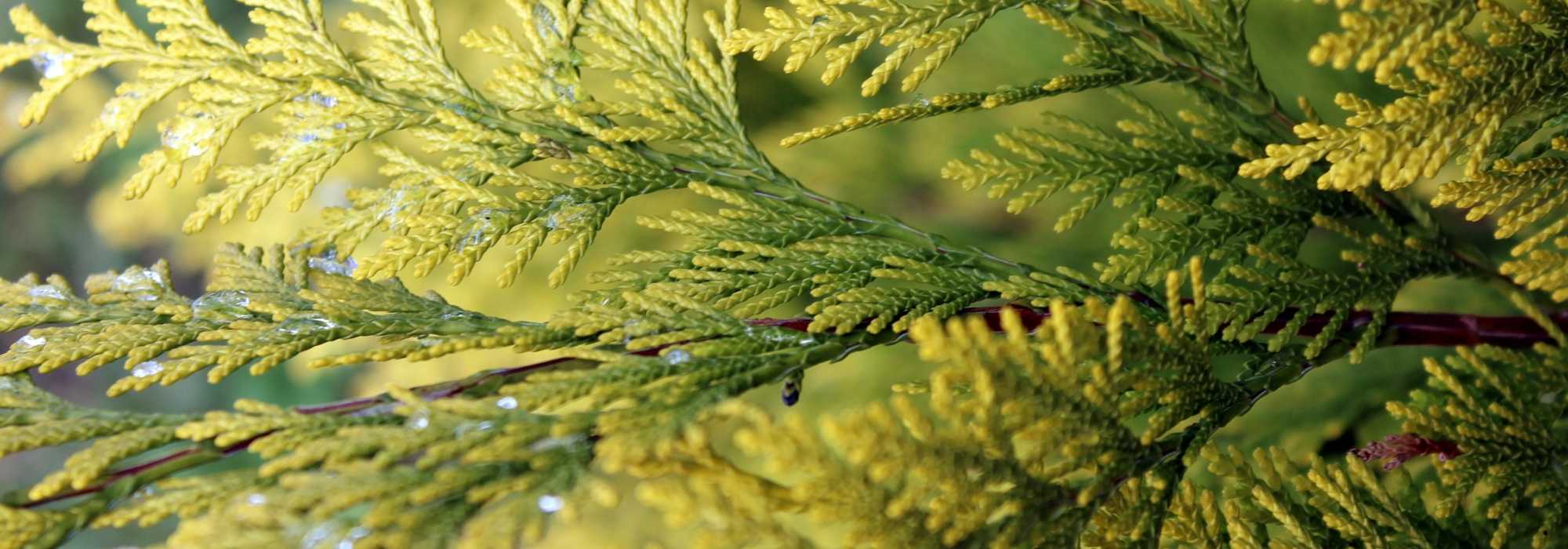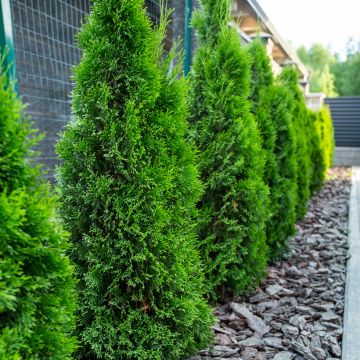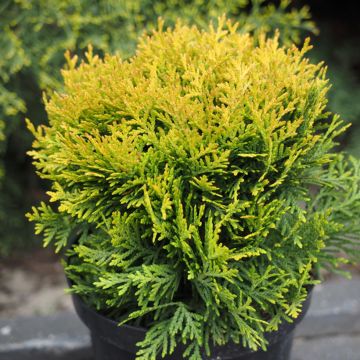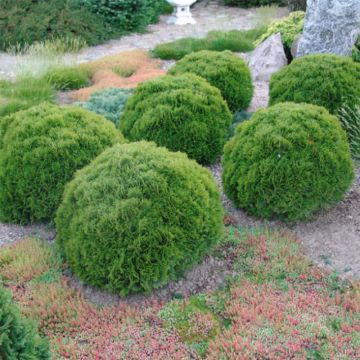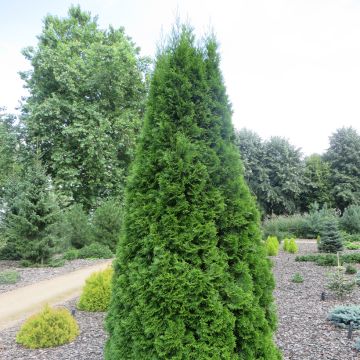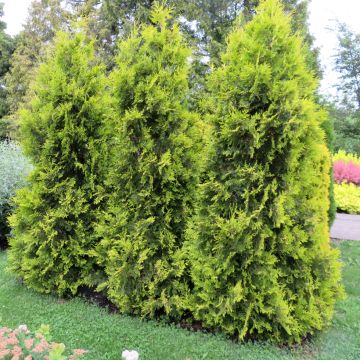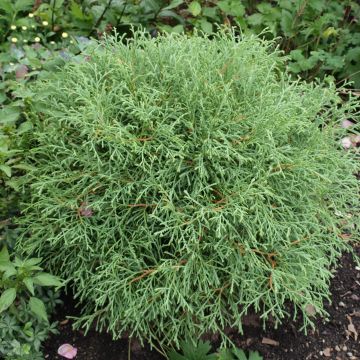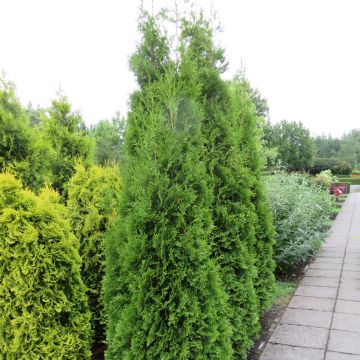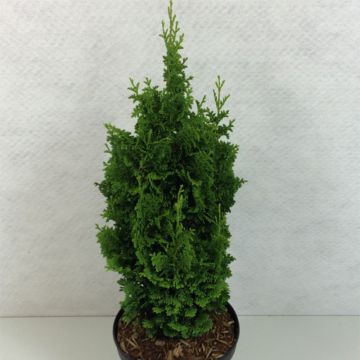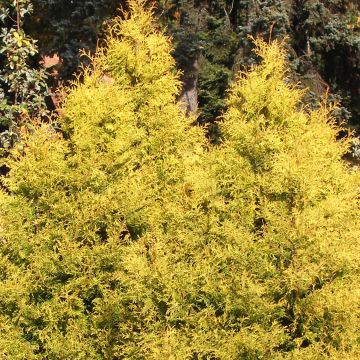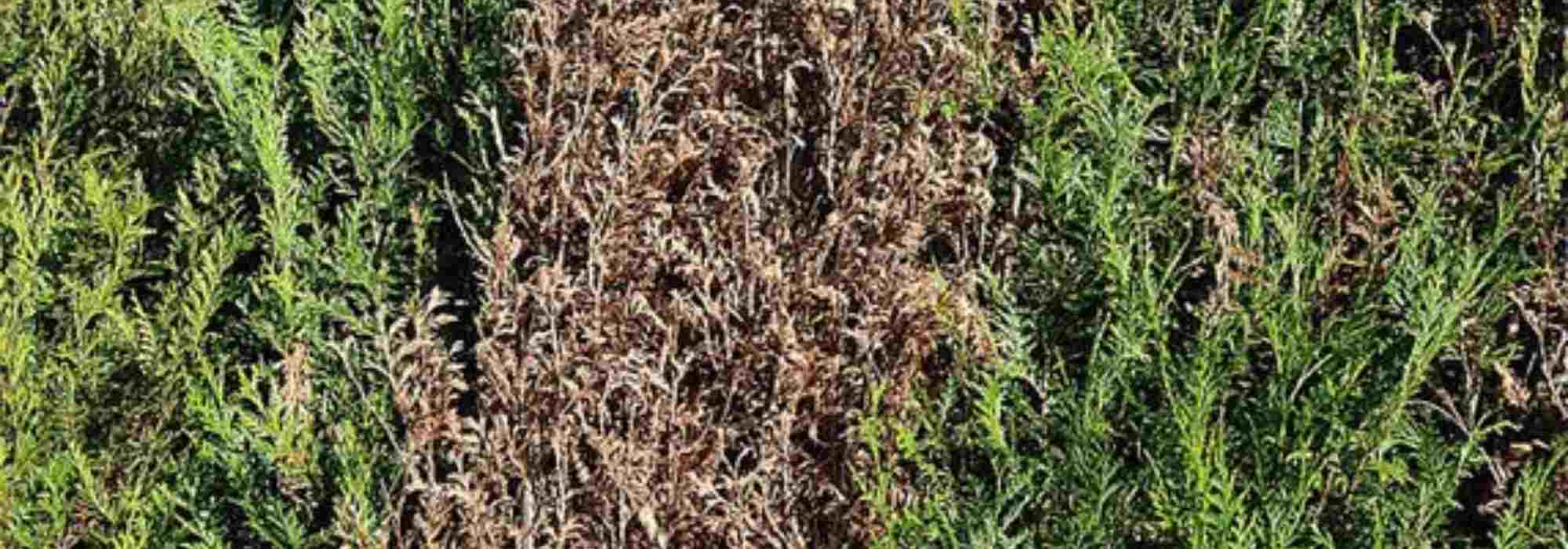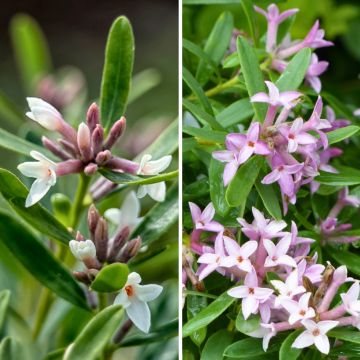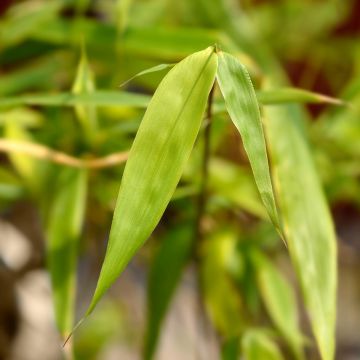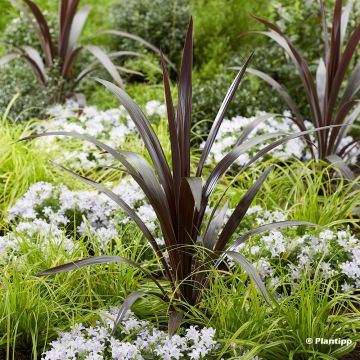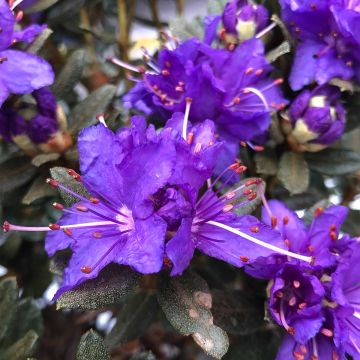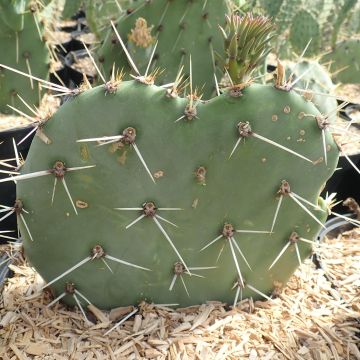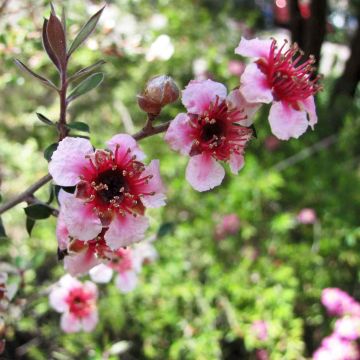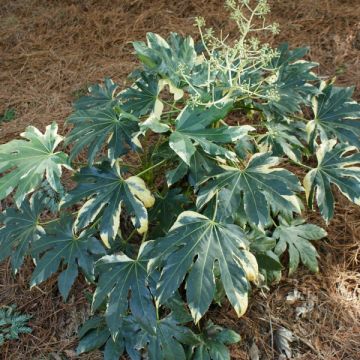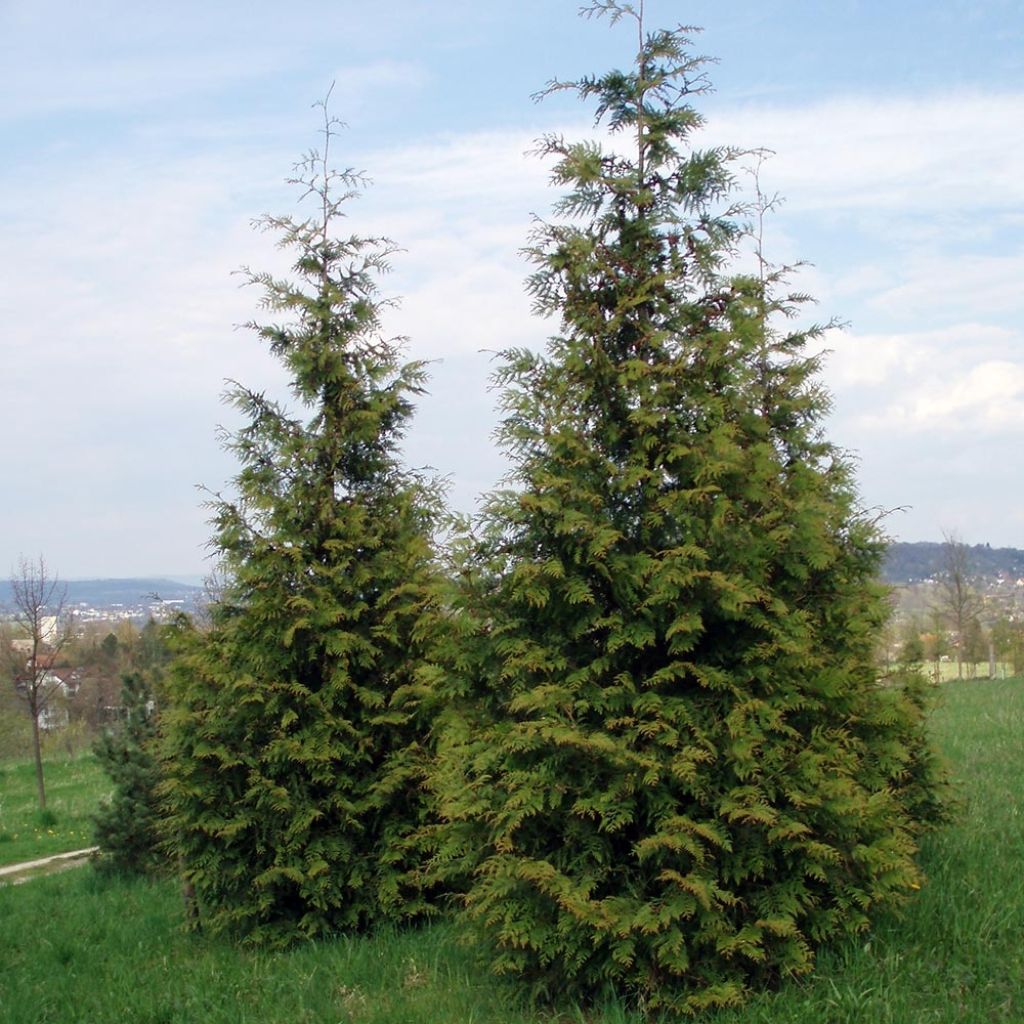

Thuja plicata Excelsa - Western Red Cedar
Thuja plicata Excelsa - Western Red Cedar
Thuja plicata Excelsa
Western Red Cedar, Pacific Red Cedar, Giant Red Cedar
Special offer!
Receive a €20 voucher for any order over €90 (excluding delivery costs, credit notes, and plastic-free options)!
1- Add your favorite plants to your cart.
2- Once you have reached €90, confirm your order (you can even choose the delivery date!).
3- As soon as your order is shipped, you will receive an email containing your voucher code, valid for 3 months (90 days).
Your voucher is unique and can only be used once, for any order with a minimum value of €20, excluding delivery costs.
Can be combined with other current offers, non-divisible and non-refundable.
Home or relay delivery (depending on size and destination)
Schedule delivery date,
and select date in basket
This plant carries a 24 months recovery warranty
More information
We guarantee the quality of our plants for a full growing cycle, and will replace at our expense any plant that fails to recover under normal climatic and planting conditions.
Would this plant suit my garden?
Set up your Plantfit profile →
Description
Thuja plicata 'Excelsa' is one of the most planted varieties of Giant California Thuja in Europe. Perfectly hardy, very tolerant of repeated pruning and fast-growing in moist soil, this large conifer allows for the creation of large, dense evergreen screens that are effective against both wind and prying eyes. Its dark green glossy foliage, which is aromatic when broken, is adorned with fairly decorative green cones that turn brown when mature. It should be planted in a sunny position and can be grown without difficulty in any deep, not too dry soil in summer.
Thuja plicata, also known as Western Redcedar or Lobb's Thuja, is an evergreen conifer of the cypress family native to the northwest of North America, particularly northern California. In its natural environment, this giant reaches heights of 50 to 60 metres (164 to 196 feet 11 inches) and can develop a trunk with a diameter of 3 metres (9 feet 10 inches) when it reaches the end of its existence at around 700 years old. It has long been exploited for its soft and durable wood, known in Europe as 'Red cedar'. This giant reigns in the thickness of lush forests (California is not just a arid desert), but also descends to the banks of rivers or colonizes swampy forests. It is a shade-tolerant species, even in dense shade, and thrives in humid conditions. Its scale-like foliage is the flattest in the genus.
The 'Excelsa' variety is very similar to the cultivar 'Atrovirens' but is distinguished by a broader and more conical habit with age and less dense and more spreading branching. Its growth is fast, so it will reach a height of about 12 metres (39 feet 5 inches) and a spread of 7 metres (23 feet) if not regularly pruned. In our gardens, planting it in a dense hedge and annual pruning help maintain it at more reasonable proportions, around 5 to 7 metres (16 feet 5 inches to 23 feet) in height and 1 metre (3 feet 4 inches) in spread. This conifer has flattened branches covered with scale-like leaves. The leaves, overlapping each other, give the branchlets a flat appearance. The foliage is aromatic and dark green throughout the year, slightly bronzing in winter. Its fruits, measuring 1.2cm (0.5 in), are green and turn brown in autumn.
The 'Excelsa' Thuja, with its ease of cultivation, high tolerance to pruning, and dense growth, is a variety that has proven itself, preferably in cool climates. It adapts to almost any condition except dense shade and dry soils. Its density protects the garden all year round, and its dark silhouette, highlights any flowerbed through chromatic contrast, especially white blooms (mock orange, serviceberries, 'Snow Fairy' rose...) and light-coloured foliage (Salix cinerea, Salix exigua) or golden foliage (Gingko biloba 'Blagon', Chamaecyparis lawsoniana 'Ivonne'). Like all evergreens in gardens, it brings color and liveliness in all seasons.
Thuja plicata Excelsa - Western Red Cedar in pictures
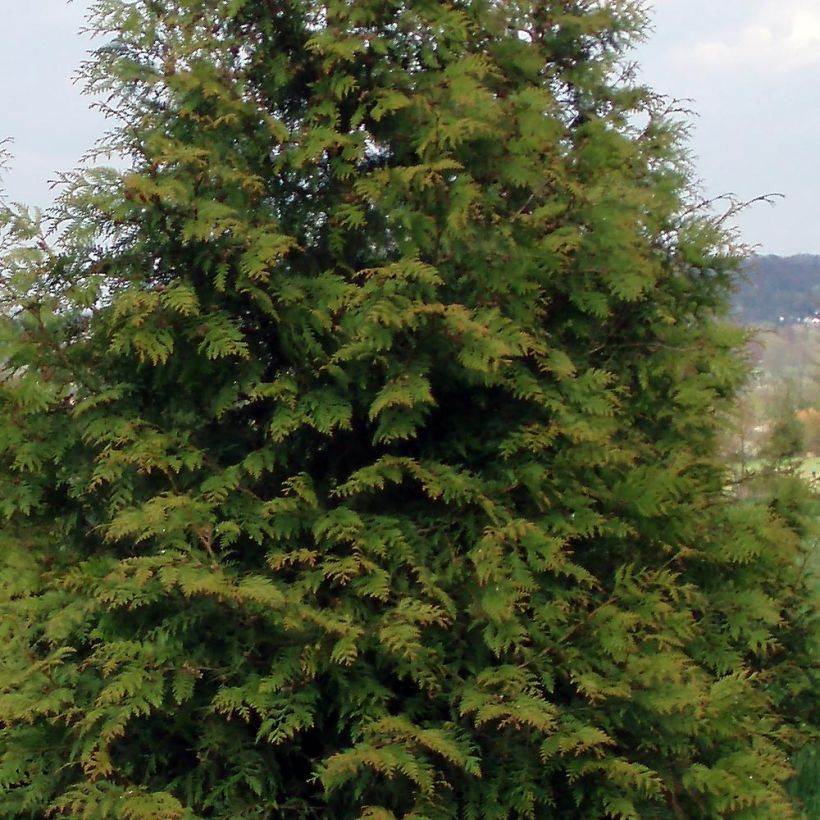

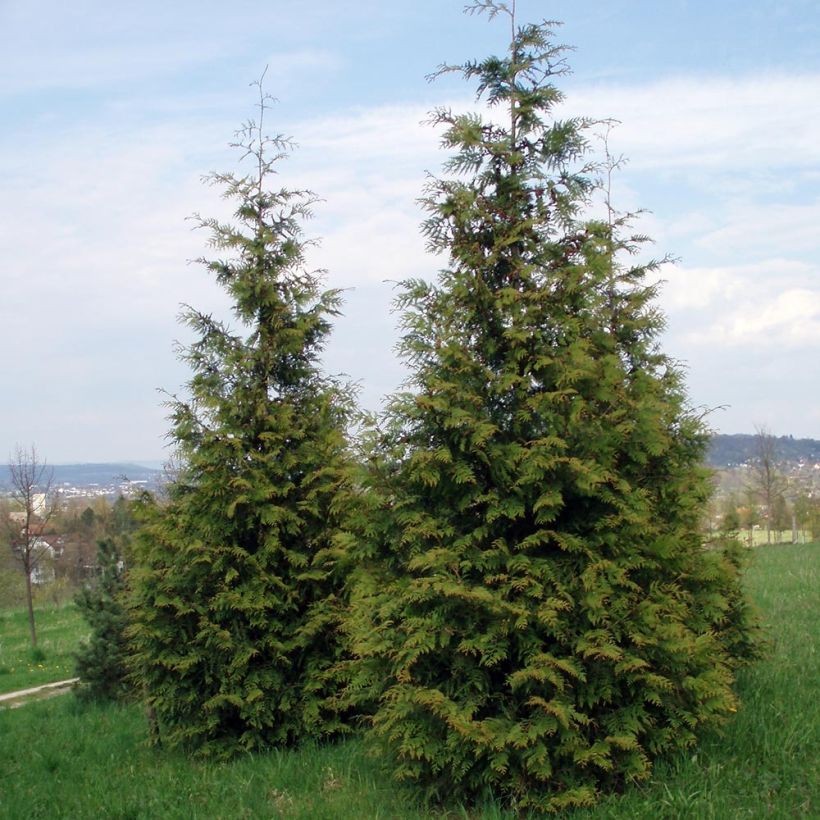

Plant habit
Flowering
Foliage
Botanical data
Thuja
plicata
Excelsa
Cupressaceae
Western Red Cedar, Pacific Red Cedar, Giant Red Cedar
Cultivar or hybrid
Other Thuya - Thuja
View all →Planting and care
Thuja plicata 'Excelsa' is planted from September to November and from February to June in deep, ordinary but loose and not too heavy, limestone soil, close to neutrality or even slightly acidic, retaining freshness. This variety dreads drought. It will thrive in a sunny and open exposure although it also tolerates shade. Soak the root balls well before planting. Optionally add organic amendment to the planting and water generously in the first years, and in case of prolonged drought. In very poor soil, you can apply special conifer fertilizer every year in April and cultivate the soil in summer. This hardy conifer (up to -25°C (-13 °F) at least) tolerates pruning perfectly, up to twice a year in April and August. It has the ability to produce young shoots even on old wood.
Its enemies are mainly red spiders and scale insects, which thrive in hot and dry weather. Armillaria or root rot can also develop on the roots. Thuja plicata can also present cankers on its branches.
Planting period
Intended location
Care
Planting & care advice
This item has not been reviewed yet - be the first to leave a review about it.
Similar products
Haven't found what you were looking for?
Hardiness is the lowest winter temperature a plant can endure without suffering serious damage or even dying. However, hardiness is affected by location (a sheltered area, such as a patio), protection (winter cover) and soil type (hardiness is improved by well-drained soil).

Photo Sharing Terms & Conditions
In order to encourage gardeners to interact and share their experiences, Promesse de fleurs offers various media enabling content to be uploaded onto its Site - in particular via the ‘Photo sharing’ module.
The User agrees to refrain from:
- Posting any content that is illegal, prejudicial, insulting, racist, inciteful to hatred, revisionist, contrary to public decency, that infringes on privacy or on the privacy rights of third parties, in particular the publicity rights of persons and goods, intellectual property rights, or the right to privacy.
- Submitting content on behalf of a third party;
- Impersonate the identity of a third party and/or publish any personal information about a third party;
In general, the User undertakes to refrain from any unethical behaviour.
All Content (in particular text, comments, files, images, photos, videos, creative works, etc.), which may be subject to property or intellectual property rights, image or other private rights, shall remain the property of the User, subject to the limited rights granted by the terms of the licence granted by Promesse de fleurs as stated below. Users are at liberty to publish or not to publish such Content on the Site, notably via the ‘Photo Sharing’ facility, and accept that this Content shall be made public and freely accessible, notably on the Internet.
Users further acknowledge, undertake to have ,and guarantee that they hold all necessary rights and permissions to publish such material on the Site, in particular with regard to the legislation in force pertaining to any privacy, property, intellectual property, image, or contractual rights, or rights of any other nature. By publishing such Content on the Site, Users acknowledge accepting full liability as publishers of the Content within the meaning of the law, and grant Promesse de fleurs, free of charge, an inclusive, worldwide licence for the said Content for the entire duration of its publication, including all reproduction, representation, up/downloading, displaying, performing, transmission, and storage rights.
Users also grant permission for their name to be linked to the Content and accept that this link may not always be made available.
By engaging in posting material, Users consent to their Content becoming automatically accessible on the Internet, in particular on other sites and/or blogs and/or web pages of the Promesse de fleurs site, including in particular social pages and the Promesse de fleurs catalogue.
Users may secure the removal of entrusted content free of charge by issuing a simple request via our contact form.
The flowering period indicated on our website applies to countries and regions located in USDA zone 8 (France, the United Kingdom, Ireland, the Netherlands, etc.)
It will vary according to where you live:
- In zones 9 to 10 (Italy, Spain, Greece, etc.), flowering will occur about 2 to 4 weeks earlier.
- In zones 6 to 7 (Germany, Poland, Slovenia, and lower mountainous regions), flowering will be delayed by 2 to 3 weeks.
- In zone 5 (Central Europe, Scandinavia), blooming will be delayed by 3 to 5 weeks.
In temperate climates, pruning of spring-flowering shrubs (forsythia, spireas, etc.) should be done just after flowering.
Pruning of summer-flowering shrubs (Indian Lilac, Perovskia, etc.) can be done in winter or spring.
In cold regions as well as with frost-sensitive plants, avoid pruning too early when severe frosts may still occur.
The planting period indicated on our website applies to countries and regions located in USDA zone 8 (France, United Kingdom, Ireland, Netherlands).
It will vary according to where you live:
- In Mediterranean zones (Marseille, Madrid, Milan, etc.), autumn and winter are the best planting periods.
- In continental zones (Strasbourg, Munich, Vienna, etc.), delay planting by 2 to 3 weeks in spring and bring it forward by 2 to 4 weeks in autumn.
- In mountainous regions (the Alps, Pyrenees, Carpathians, etc.), it is best to plant in late spring (May-June) or late summer (August-September).
The harvesting period indicated on our website applies to countries and regions in USDA zone 8 (France, England, Ireland, the Netherlands).
In colder areas (Scandinavia, Poland, Austria...) fruit and vegetable harvests are likely to be delayed by 3-4 weeks.
In warmer areas (Italy, Spain, Greece, etc.), harvesting will probably take place earlier, depending on weather conditions.
The sowing periods indicated on our website apply to countries and regions within USDA Zone 8 (France, UK, Ireland, Netherlands).
In colder areas (Scandinavia, Poland, Austria...), delay any outdoor sowing by 3-4 weeks, or sow under glass.
In warmer climes (Italy, Spain, Greece, etc.), bring outdoor sowing forward by a few weeks.






























